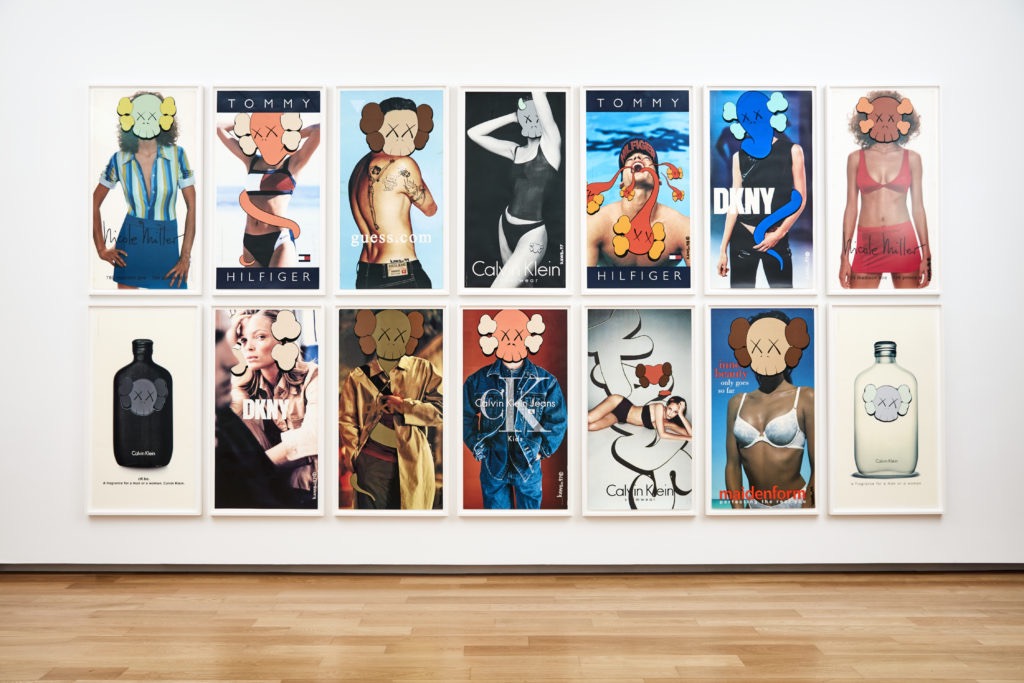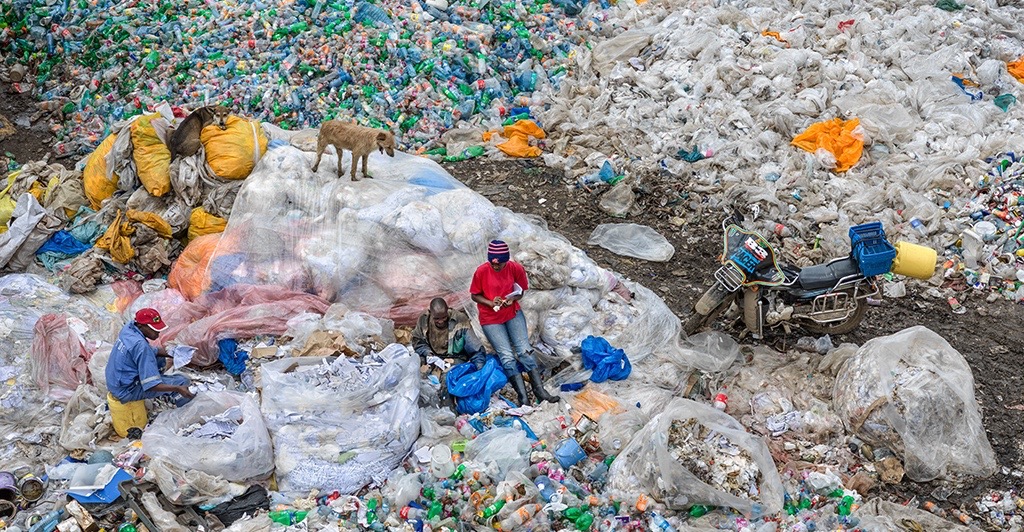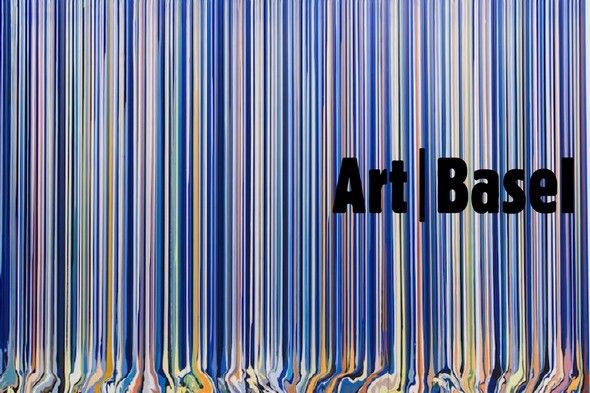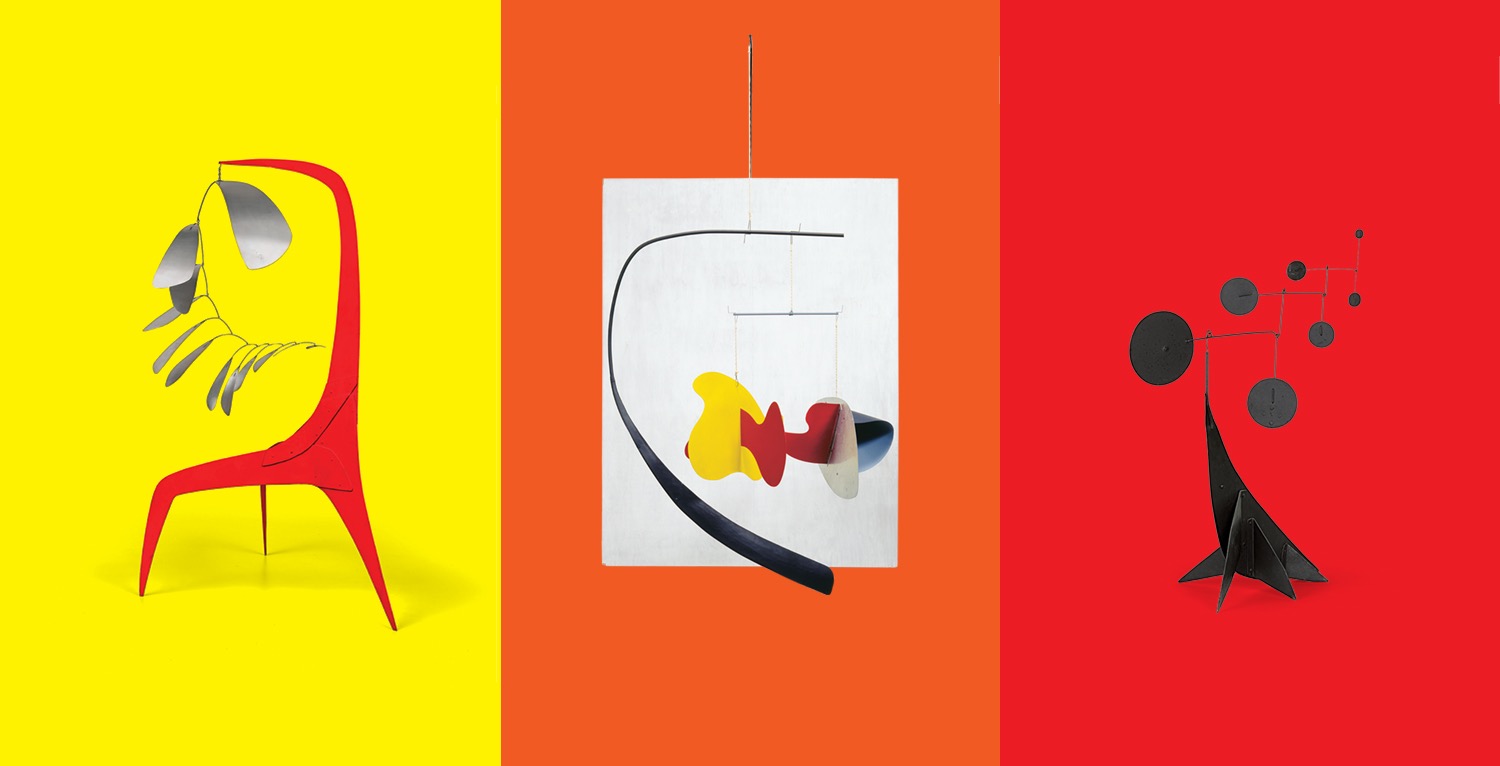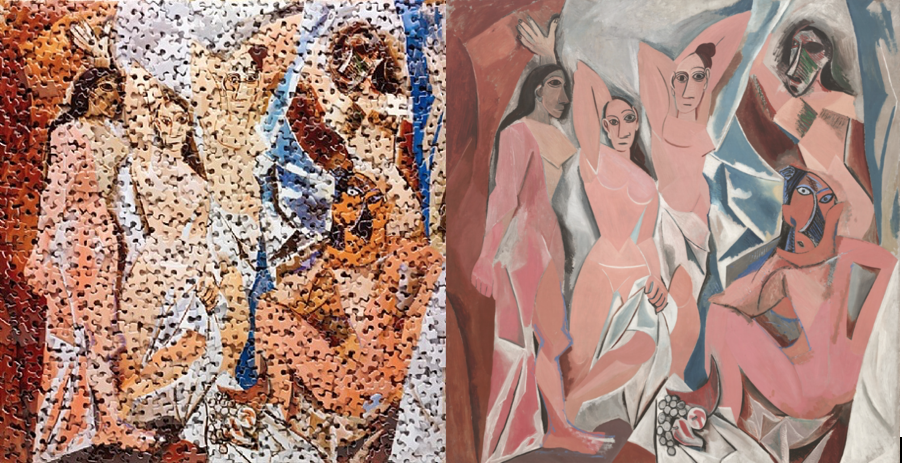To many, graffiti and street art conjures up nothing more than images of pesky, rebellious teens armed with aerosol cans used to de-face public venues in the middle of the night.
Continue readingLet There Be Light! James Turrell & Ellsworth Kelly
May 16th marks the International Day of Light, a global initiative that engenders an appreciation of light and the varied roles it plays in culture.
Continue readingGoing Green: Environmentally Conscious Artists
Edward Burtynsky, Dandora Landfill #3 Plastics Recycling (Anthropocene series), 2016, Archival pigment print
Environmental art addresses the urgent need to save our planet
Earth Day is an annual phenomenon that is more relevant than ever. Global warming, rising sea levels and rampant pollution are hot topics that are at the forefront of contemporary consciousness on a worldwide scale. As a powerful tool used for social commentary, it is no wonder that art is being employed as a vehicle to confront the mounting collective concern for our planet. To celebrate Earth Day this year, we are highlighting three artists who have made environmentalism a priority in their artistic endeavours.
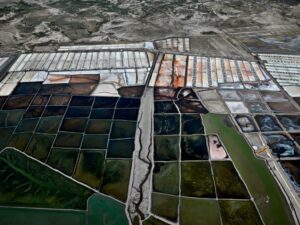
Edward Burtynsky, Salt Pan #13, Little Rann of Kutch, Gujarat, India (Salt Pans series), 2016, Archival pigment print
Edward Burtynksy is a renowned Canadian photographer whose artistic career is devoted to depicting a planet ravaged by humanity. He documents colossal manmade structures including oil rigs, quarries, dams, mines and factories using a unique photographic practice. He takes photos from the aerial vantage point of a helicopter equipped with a small floor opening through which he positions his camera’s lens. The result are stunningly haunting images with a sublime aesthetic quality that address the severe global consequences of human activity and the environmental toll of mass industrialization.
Related Posts
Valentine’s Day: Artists in Love
Paintings of Pooches: National Dog Day 2018
Armory Show 2018 Highlights
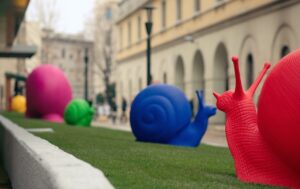
Cracking Art, Milan installation, 2018
An Italian based group started by six individuals, Cracking Art is a contemporary art movement that promotes a strong environmental commitment. Plastic is the group’s chosen medium which is used to create an array of brightly colored, hollow animal sculptures including bunnies, snails, meercats, penguins and turtles that are scattered throughout their many public installations. Importantly, they exclusively use recycled plastic, customarily destroying and re-using materials from old sculptures to create new ones. The group’s emphasis on recycling removes plastic from its toxic role in nature and promotes the importance of sustainability.
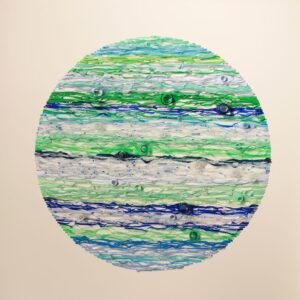
Jérôme Fortin, Untitled (Marines series), 2002-2012, Plastic bottles mounted ton panel, 36 inches diameter
Jérôme Fortin is a Montreal based artist who addresses the theme of pollution in his oeuvre. The Marines, for example, is a series Fortin developed which encompasses gathering found plastic bottles collected from daily walks along the shoreline and re-purposing them into artistic tondos. He meticulously cuts and colours the found bottles then densely layers them in a way that mimics wave motions. The bottlenecks indicate the number of bottles that go into each artwork.
If any of these artists are of interest to you, please contact us for availability and prices.
Celebrating Two Iconic Female Artists: Cindy Sherman and Barbara Kruger
Sherman and Kruger boldly made their voices heard in a vastly male-dominated arena
Cindy Sherman and Barbara Kruger are two seminal feminist figures in art history who fortuitously share the same birthday month of January. To celebrate the occasion, we would like to highlight both women’s significant contribution to the arts through their unique subversive artistic oeuvres.
Emerging on the art scene in the late 70s, Cindy Sherman engages in a photographic practice that explores identity, sexuality and femininity. Boldly assuming the roles of both photographer and subject, Sherman transforms herself into a glossary of poses, outfits, and costumes that emulate various female stereotypes and characters. Her authoritative and self-conscious control over her images appropriates the ‘male gaze’ that haunts the canon of art history.

Cindy Sherman, Untitled, 1981, Chromogenic color print, 24 x 48 inches
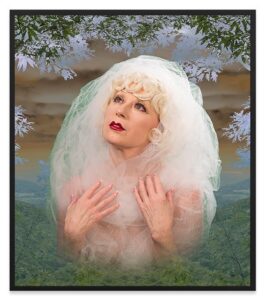
Cindy Sherman, Untitled #592, 2017, Dye sumblimation metal print, 41.5 x 36.5 inches
Related Posts
ARTspiration: Appropriation in Art
New Collection: Photography & More
Conceptual Art: What is it?
Around the same time, Barbara Kruger developed her signature artistic method of using found images as backdrops against which she inscribes brief, but provocative, statements. Her tongue-in-cheek satirical captions customarily include pronouns that directly confront and involve the viewer with the aim of interrogating contemporary societal norms rooted in patriarchal conventions. She employs capital letters and the colour red to emphasize the boldness and gravity of her words.

Barbara Kruger, Surveillance, 1983, Color lithograph, 11 x 28 inches
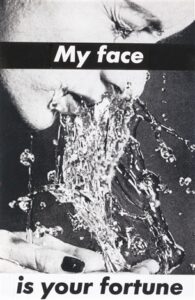
Barbara Kruger, Untitled (My face is your fortune), 1982, Photographic montage, 10.5 x 7 inches
Both Sherman and Kruger played integral roles in carving out a space for women artists in the mainstream artworld, validating female perspectives in a vastly male-dominated field. They have continued to produce artwork throughout the decades and remain more relevant than ever. Both artists have been the subject of major exhibitions at prestigious galleries and institutions and their work is highly sought after by collectors globally.
If you are interested in acquiring artwork by either of these iconic female artists, please contact us.
Finds From the Fair: Miami Basel 2018
While the jaw-dropping masterpieces at Art Basel are impressive, the fair also contains great accessible pieces fit for any budget.
Another Art Basel has come and gone, the elite fair where art collectors and enthusiasts flock to Miami where an incalculable amount of artwork is displayed at the main convention, as well as at a slew of satellite fairs. While it is always a delight to encounter great masterpieces in the flesh, such as Mark Rothko’s 1955 canvas that reportedly sold for $50 million, we have rounded up some great finds from the fair that won’t necessarily break the bank. See below some of our top picks of artwork ranging from $2,500-$75,000.
Related Posts
Armory Show 2018 Highlights
Miami Basel: Through the Eyes of a Dealer
Paintings of Pooches: National Dog Day 2018
Please contact us for enquiries.
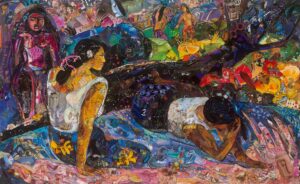
Vik Muniz, Repro: Glyptoteket (Reclining Tahitian Women, Gauguin), 2018, Digital C-print, Edition of 6, 43.5 x 68.5 inches AND 74.5 x 119.25 inches
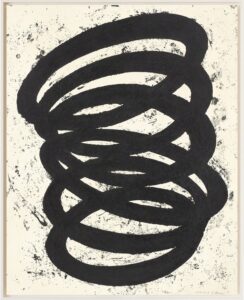
Richard Serra, Finally Finished IV, 2018, Etching, Edition of 44, 76.5 x 60 inches

Andy Burgess, Cantilever Pool House, 2016, Oil on canvas, 49 x 52 inches

Donald Sultan, Yellow and Red Poppies, 2018, Shaped aluminum with powder coat on polished aluminum base, Edition of 12, 24.5 x 24 x 3.5 inches

Jean-Francois Rauzier, The Hamptons Veduta, 2018, C-print, Edition of 8, 58 x 98 inches
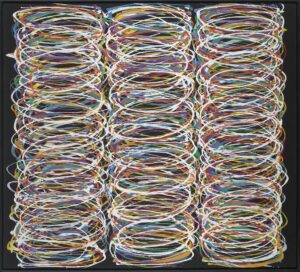
Dan Christensen, Si, Three, 2003, Acrylic on canvas, 36 x 40 inches
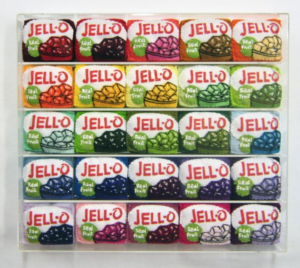
Lucy Sparrow, Say Jello, Wave Goodbye, Felt, acrylic and thread in Perspex, Edition of 20, 16.5 x 19.5 x 3 inches
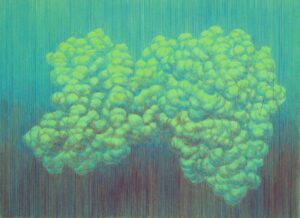
Meaghan Hyckie, UFO-76, 2018, Coloured pencil crayon, 12.75 x 16.75 inches
Auction Records: Artists who Live to See their Success
Does the pervasive image of the impoverished and struggling artist endure in today’s hot contemporary art market?
Anyone who has studied or discussed Art History is familiar with the starving artist trope – the idea of the artist who is rejected by his or her contemporaries, only to rise to fame posthumously. Vincent Van Gogh is a prime example, as he is one of the world’s most revered artists, yet only sold one painting during his lifetime.
The dismal image of the struggling and tortured artist quickly dissolves when surveying auction records for living artists. In fact, there is buzz that a new record will be established this week on November 15th during Christie’s evening sale in New York. David Hockney’s monumental canvas, “Portrait of an Artist (Pool with Two Figures)” (1972) is poised to become the most valuable work by a living artist ever sold at auction, with an estimated hammer price of $80 million. The current record is held by Jeff Koons, whose ten foot high stainless steel Orange Balloon Dog sold for $58.4 million in 2013. Gerard Richter, Ed Ruscha, Jasper Johns, Christopher Wool and Damien Hirst are only a handful of the many other artists who have achieved great success and managed to live to see it.
Related Posts
Alexander Calder: Radical Inventor
ARTspiration: Appropriation in Art
Canadian Art and the International Art Market
Whether or not Hockney smashes Koons’ already impressive record, it is still exciting to witness the astronomical numbers living contemporary artists can fetch at auction. Click here to view the other lots in Christie’s upcoming Post-War and Contemporary Evening Sale.
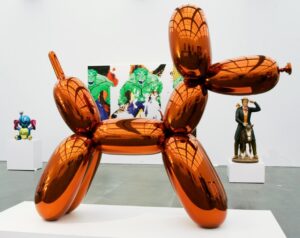
Jeff Koons, Balloon Dog (Orange), 1994-2000, Mirror-polished stainless steel with transparent color coating, 121 x 143 x 45 inches. Auction price realized: USD $58,405,000
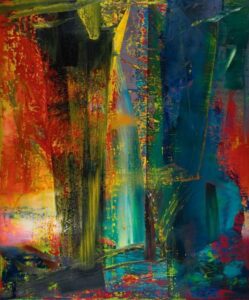
Gerard Richter, Abstraktes Bild, 1986, Oil on canvas, 118 x 98 inches. Auction price realized: GBP £30,389,000
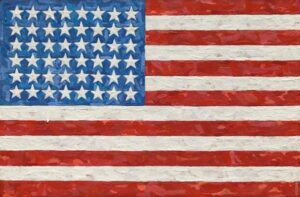
Jasper Johns, FLAG, 1983, Encaustic on silk flag canvas, 11.5 x 17.5 inches, Auction price realized: USD $36,005,000
Alexander Calder: Radical Inventor
Alexander Calder, known as the artist who “made sculpture move,” revolutionized sculpture by suspending objects, creating mesmerizing shadows and changing perspectives.
Walking into the Montreal Museum of Fine Art’s Exhibition, ‘Alexander Calder: Radical Inventor’, viewers are immediately confronted with a slowly rotating circular couch with a large Calder mobile sculpture hanging above it. I sat down, laid on my back and gazed above to view the artwork. The moving couch offered continuously changing perspectives of the piece above, aptly setting the tone for the retrospective celebrating an artist who famously “made sculpture move.”
The exhibition features many of Calder’s mobiles – the artist’s unique artform consisting of delicately suspended forms that gently shift in response to air currents. Calder’s invention of the mobile completely revolutionized sculpture by renouncing stable heavy objects with mass and weight in favour of light, airy constructions that flow and cast magnificent shadows on walls that, in a way, become sculptures in their own right.
Related Posts
Ada with Coffee Silhouette Sculpture, Alex Katz
Conceptual Art: What is it?
ARTspiration: Appropriation in Art
The mobiles, stabiles, paintings and jewellery displayed throughout the exhibition showcase the artist’s innovative multidisciplinary practice. My favourite part of the exhibition, however, was the video of Calder’s circus performance displayed early on in the show. Performed in the avant-garde circles of Paris from 1926-31, Calder’s circus comprised of hundreds of miniature figurines made of wire and cloth that he manipulated into action. The video captures Calder vigorously pulling levers and strings and turning cranks to animate his characters and their props in a way that emulates various acts that occur at the circus. Trapeze artists fly through the air, latch arms and fall into a net. A lion roars before placing its handler’s head into its mouth. Act after act, it is truly a delight to watch and demonstrates the artist’s distinctive ability to imbue static objects with a strong performative presence. The circus performance captures the essence of the artist’s entire oeuvre that is, at once, playful and sophisticated.
The exhibition runs through until February 24th and I strongly encourage you to visit if you are in Montreal. Visit the museum’s website for more information.
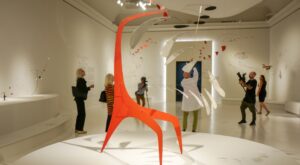
ARTspiration: Appropriation in Art
Appropriation has a long and varied history in the arts and is a broad term that denotes the intentional copying and borrowing of pre-existing imagery
Continue readingPainting Versus Prints: Battle of the Mediums
Collectors, both novice and seasoned, are confronted with a host of decisions when purchasing artwork in terms of subject matter, period, colour, size, price and various other factors.
Continue readingNew Collection: Photography & More
Robin Rosenberg Fine Art has recently acquired an outstanding collection featuring Canadian and international artwork with an emphasis on vintage and contemporary photography.
Continue reading

